2019 Tata Harrier review, road test
Tata’s big SUV sure got people talking. But is it as good as everyone hoped it would be? Only an exhaustive road test can give the definitive verdict.
Published on May 07, 2019 10:00:00 AM
1,11,092 Views
Follow us on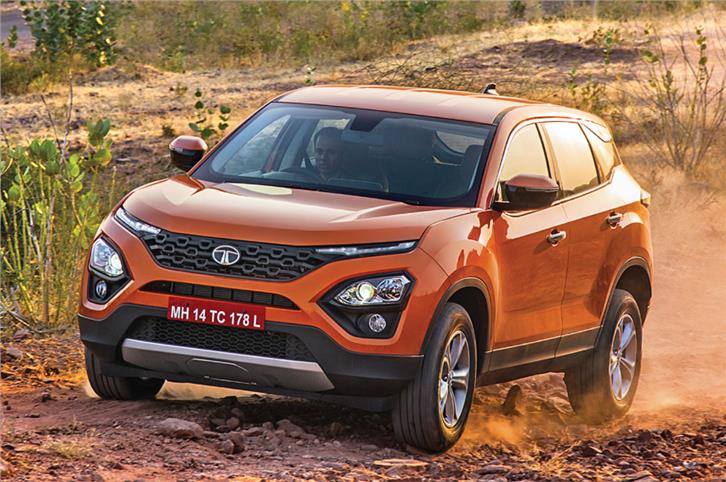
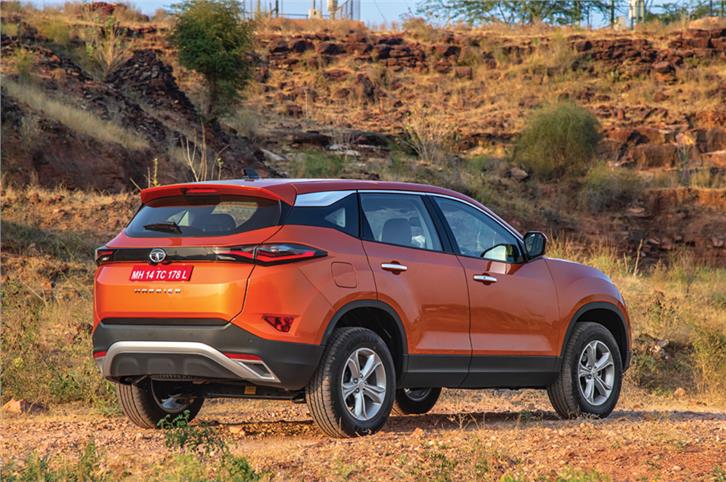
The striking-looking Harrier stands out in the urban jungle and the real one.
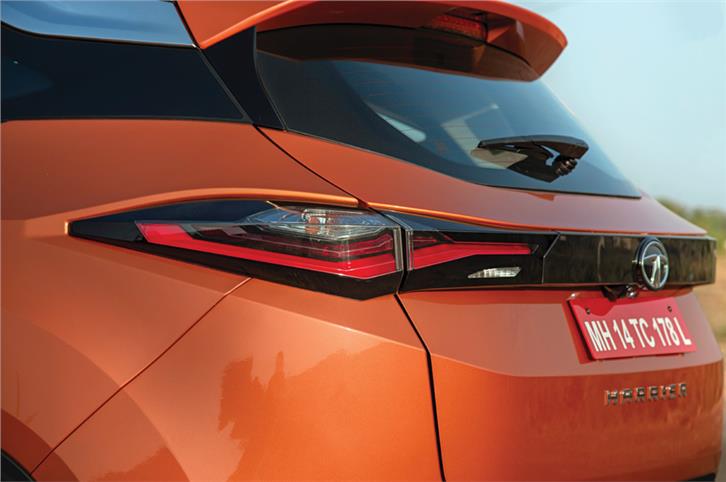
Pinched glasshouse at rear looks sleek but rear window is small.
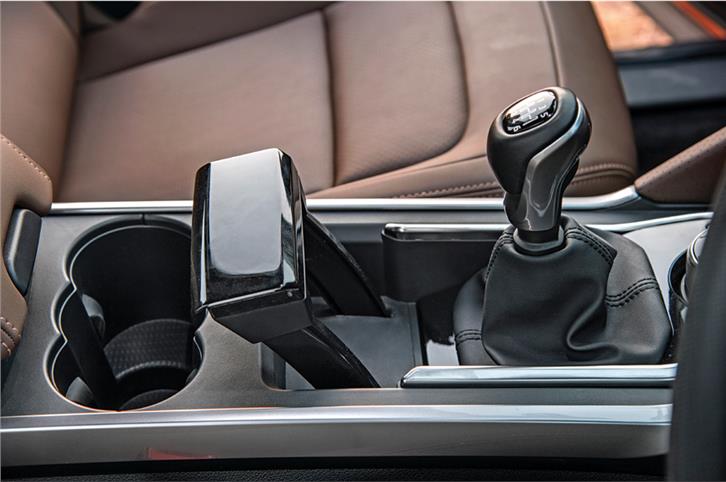
Thrust control-like handbrake lever nicer to look at than it is to use. It is fiddly to operate.
Tata Motors hit it out of the park with the futuristic H5X but few thought the production version would stay so true to the concept. Sure, certain elements have been toned down for production but the Harrier still looks like a concept car for the road. The styling makes heads turn and, without fail, you’ll see an expression of shock when people notice the Tata badge on the grille. The Harrier is the first product styled to Tata Motors’ evolved Impact Design 2.0 philosophy and the look sure makes an impact.

Being 4,598mm long, 1,894mm wide and 1,706mm tall, the Harrier is a fairly substantial SUV to begin with, and the high-set bonnet only gives it more road presence. You could describe the Harrier’s frontal styling as busy and it may not resonate with buyers who like their SUVs plain and simple but, going by online chatter, the radical face has more fans than ‘haters’. The front end is characterized by a strip of high-set LEDs that seemingly flow into the large grille. Mind you, the LEDs merely function as daytime running lights and turn signal indicators; the main headlamps sit lower down on the bumper in a ‘tri-arrow’ enclosure. The split headlight look is radical but, curiously enough, the Harrier won’t be the only SUV to sport it. The Hyundai Venue compact SUV and MG Hector (that will compete with the Harrier) also feature a similar arrangement. Lower down, there’s the de rigueur scuff plate, and what’s also nice is how Tata’s designers have used body cladding to give the Harrier a high riding look.

The Harrier is distinctive in profile too and the pinched glasshouse is particularly attractive. However, while the large wheel arches, which are a vital element of Impact Design 2.0, add mass to the design, they also make the 17-inch rims (16-inchers on lower trims) look a size small. Snazzier wheels would be more in keeping with the Tata’s look too. Styling at the rear is slick, though. The linked tail-lights are particularly smart and, if you look closely, you’ll also note the pronounced crease on the tailgate looks neat.

As mentioned, Tata’s OMEGA Arc platform is derived from Land Rover’s transverse engine D8 platform that underpins the Land Rover Discovery Sport. Note, ‘derived’ is the operative word here. And that’s because, while the Harrier shares many hard points with the Discovery Sport, the platform itself has been re-engineered for lower costs. Aluminium has made way for high- strength steel, the Disco Sport’s complex integral link rear suspension has been replaced by a simpler torsion beam arrangement (tuned by Lotus) and hydraulic assist has been adopted in place of the costlier but more efficient electric power steering. What’s a shame is that the Harrier also misses out on rear disc brakes, which is something you’d expect on an SUV that weighs upwards of 1.6 tonnes. The Harrier does, however, conform to India’s latest safety norms, with base versions equipped with dual airbags, front seat seatbelt reminder, speed warning system and rear parking sensors. Top-spec versions get six airbags and also see the addition of traction control and ESP with off-road modes.
Powering the Harrier is what Tata calls the ‘Kryotec’ engine. This mill is none other than the 2.0-litre Multijet II diesel engine that you’d find under the hood of a Jeep Compass, albeit in a lower state of tune. The Harrier also shares its 6-speed manual gearbox with the Jeep, though Tata uses a lower-geared final drive.
Copyright (c) Autocar India. All rights reserved.


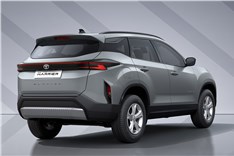






Comments
Member Login
Personal Details
No comments yet. Be the first to comment.